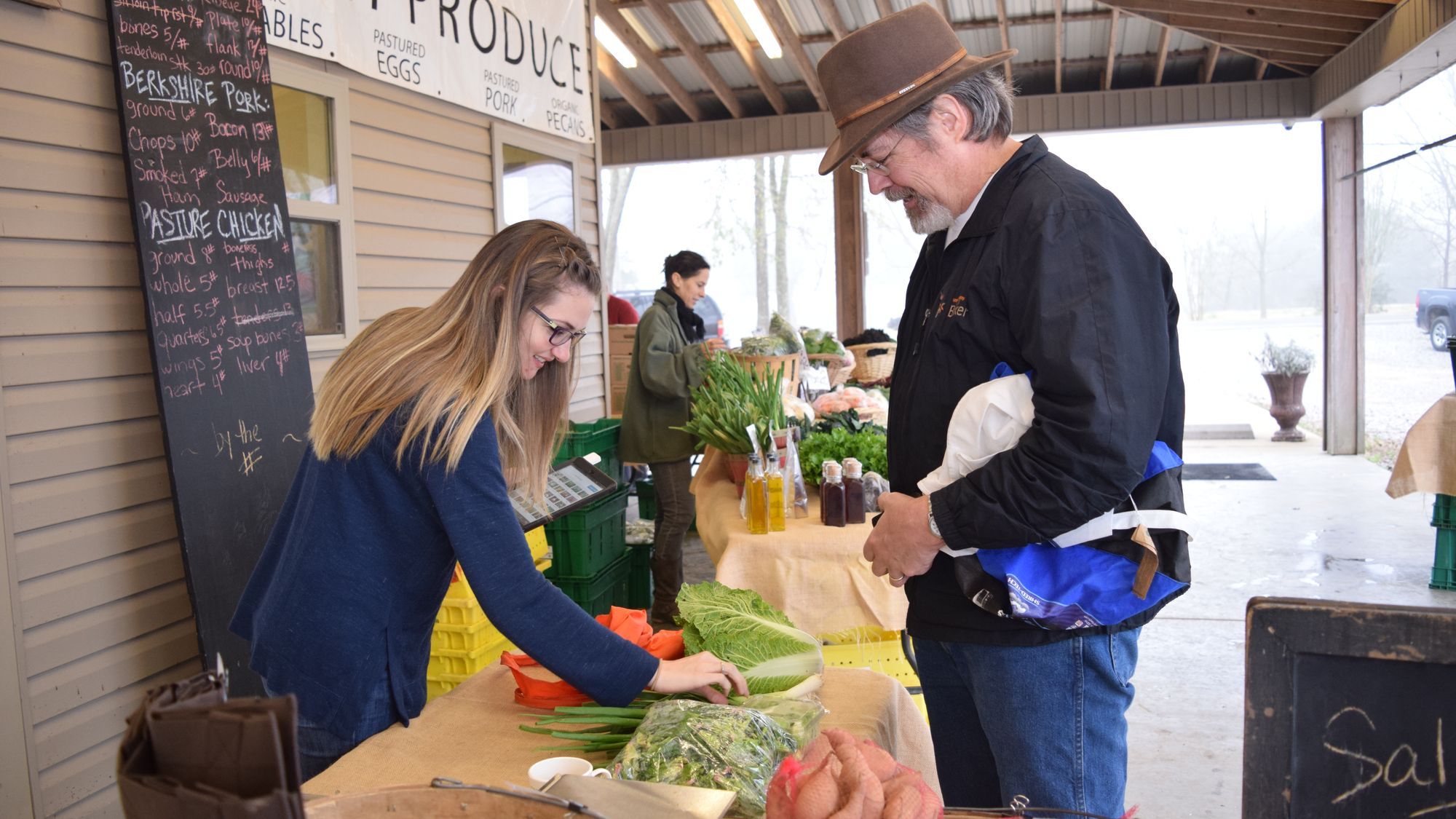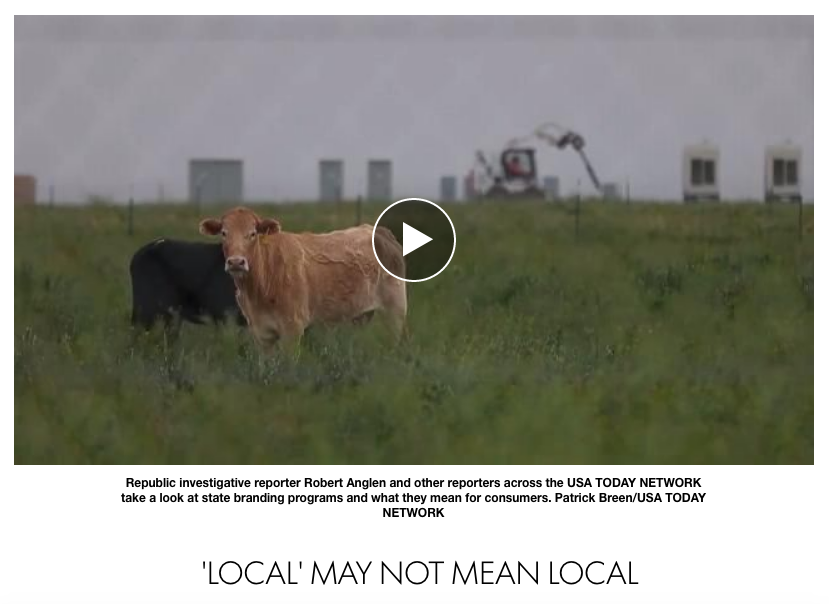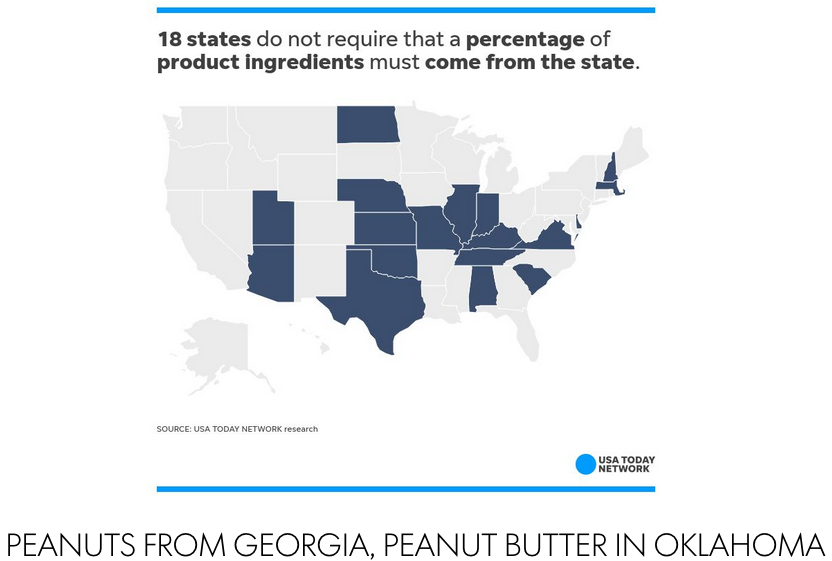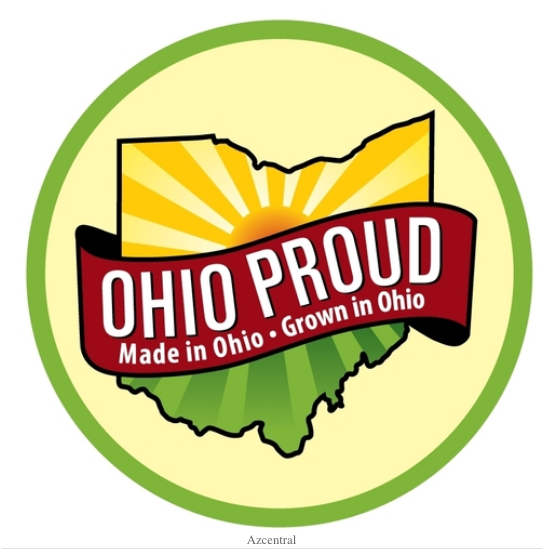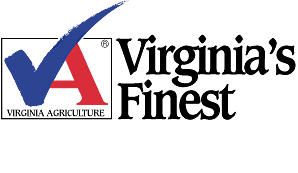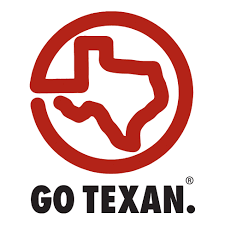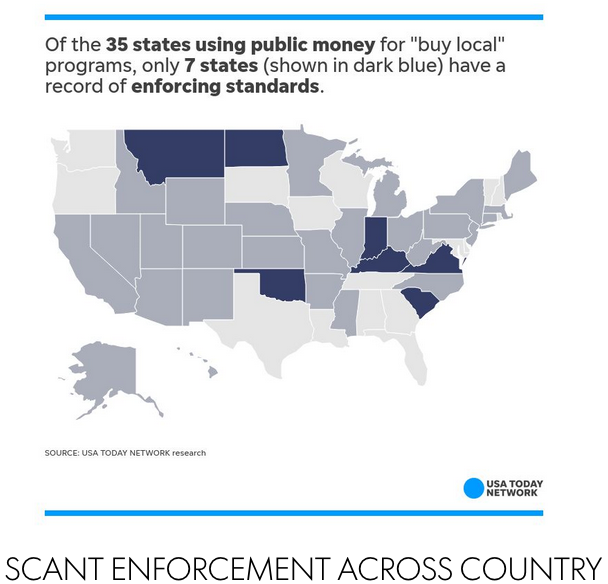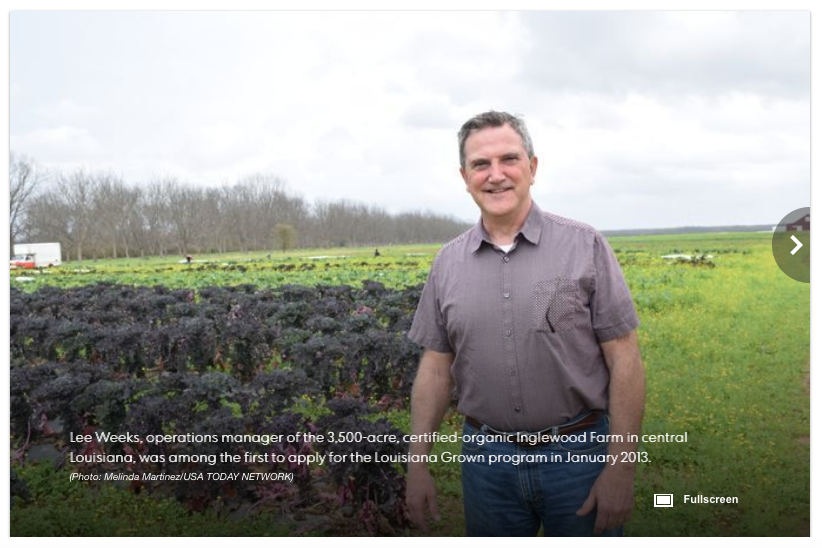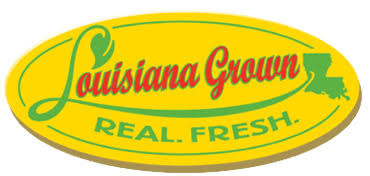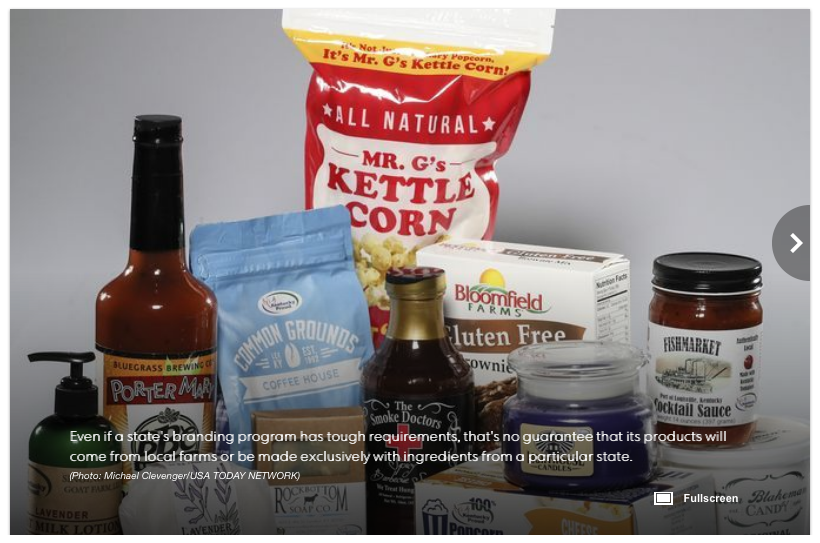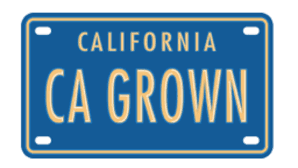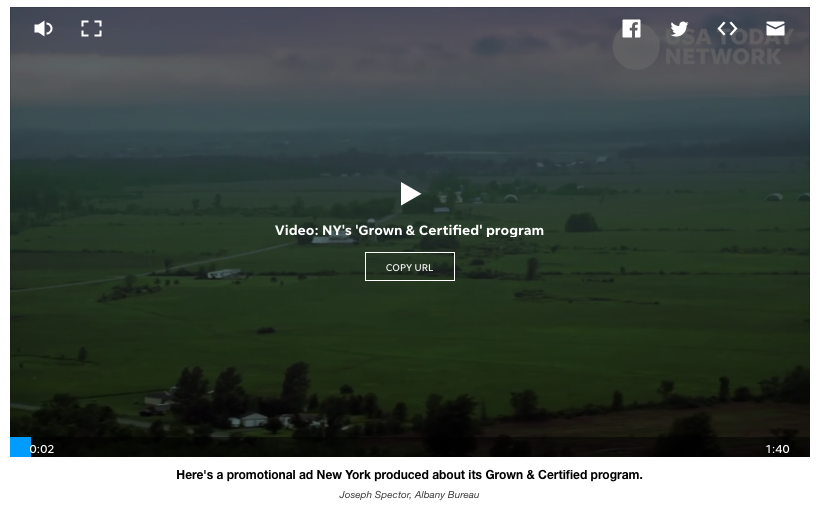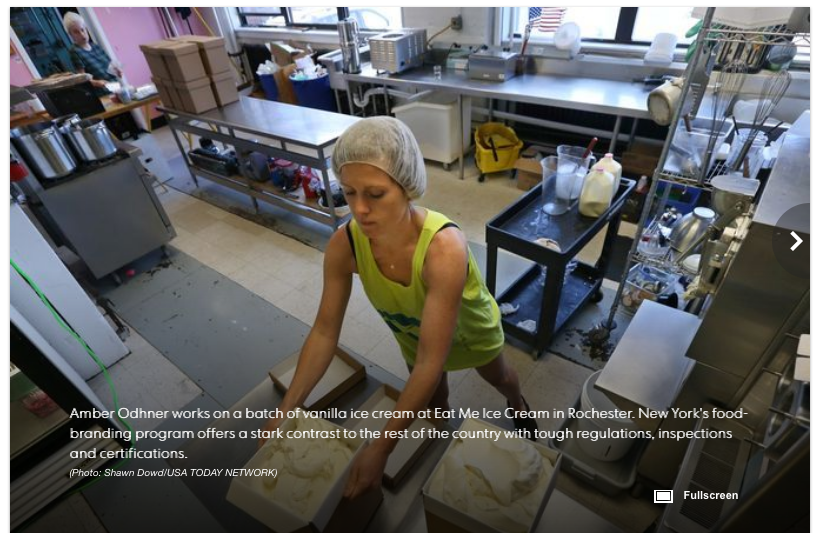AZCentral: ‘Buy local’ food programs deceive consumers and are rarely enforced, a USA TODAY Network investigation finds
In just one example, peanuts are trucked into Oklahoma. But that doesn’t stop a peanut butter manufacturer from getting a “Made in Oklahoma” brand. Here’s why.
Corrections & Clarifications: A previous version of this story gave an incorrect location for Route 11 Potato Chips. It has a processing plant in Mount Jackson, Virginia.
As local-food sales grow into a $20 billion industry, a USA TODAY Network investigation found that state-branding programs designed to inform consumers and support local farmers are deceptive and virtually unregulated.
These “buy local” programs purport to connect shoppers with food from their states by affixing logos and stickers.
Yet most state food-branding programs certify products as “local” even if half the ingredients come from another state or country. Many states have no minimum ingredient requirement.
Think of it like this: Coffee beans don’t grow in Utah. They must be imported. “But if you roast the beans here, you’re qualified for the program,” said Wayne Bradshaw, marketing and economic development division director for the Utah Department of Agriculture and Food, which runs the Utah’s Own program.
The same is true for tea brewed in Alabama, peanut butter processed in Oklahoma and potato chips cooked and bagged in Virginia. The main ingredient can come from around the world or across the country.
Over the past four months, USA TODAY Network reporters reviewed food-branding programs in the 45 states that have them. They analyzed rules, enforcement actions, and the criteria each state requires to be considered local.
They found:
- 18 states set no minimum on the percentage of locally grown ingredients a product must contain to get a state brand.
- 20 states brand food as local as long as the company making them is headquartered within the state.
- 36 states have no formal annual review process to check whether companies are following program rules. About two dozen states let companies sign up and call their food local without verifying the source of ingredients.
- 40 states have no record of enforcement actions in the past five years and no record of removing specific companies from their programs.
Program officials in nearly every state say they aren’t attempting to fool consumers by tapping the farm-to-table-movement. But they acknowledge the programs are more about marketing efforts to promote the local economy and create jobs.
“It’s a way for small- to medium-sized businesses to inform consumers that their products are locally made,” said Lori Panda, director of the Ohio Proud program. “It’s a good way for consumers to feel good about supporting the local economy.”
But many programs emphasize food in slick marketing campaigns that food and farm researchers say make shoppers think they are buying products made with local ingredients or that come from local farms.
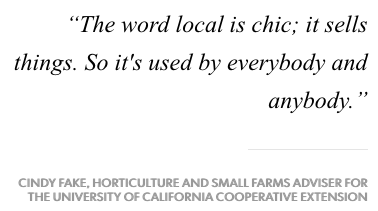 Across the country, 20 programs use the words “grown” or “fresh” in their names. The rest of the programs trade on that concept with “made,” “proud,” “taste” and “preferred” in their titles.
Across the country, 20 programs use the words “grown” or “fresh” in their names. The rest of the programs trade on that concept with “made,” “proud,” “taste” and “preferred” in their titles.
Brochures and websites often picture crisp produce, cultivated fields and profiles of farmers.
Click on the Georgia Grown website and you are transported to an agricultural display of in-season crops, farmers market bulletins and directories about Georgia pecans.
“Georgia Grown is also a brand with deep roots in sustainability, quality and integrity,” according to the website.
The program requires produce to be grown in the state to use the label. But Georgia officials do not annually inspect farms or verify food sources. The Georgia Grown label can be put on products manufactured in the state, so long as the “key ingredient” or at least 50 percent of ingredients in processed food comes from Georgia.
The visibility of these state brands depends on where you live. Shoppers in Arizona might have trouble finding branded items in stores. In Kentucky, however, some grocery stores feature kiosks crammed with branded products.
The overwhelming majority of state-branding programs rely on taxpayer funds and are managed by state departments of agriculture.
Budgets are supported primarily through a combination of state funds and membership fees paid for by farmers or business that use the labeling.
Some food researchers say the lack of uniform regulations and the number of food-branding programs not only undermine consumer confidence, they devalue the meaning of “local” food.
“The word local is chic; it sells things,” said Cindy Fake, horticulture and small-farms adviser for the University of California Cooperative Extension. “So it’s used by everybody and anybody.”
Fake said the word “local” has no clear definition and consumers are easily misled.
“They are likely to be deceived,” she said. “Consumers are thinking one way and the marketers know that. They know consumers want local, so they say it’s local.”
Most states allow food products to be labeled local even when ingredients are trucked in from elsewhere.
Milo’s Tea Company in Alabama makes iced tea. A lot of it. The family-owned company distributes as many as 100 semiloads of tea across the country every day. Its gallon jugs with their distinctive red labels can be found in most major stores.
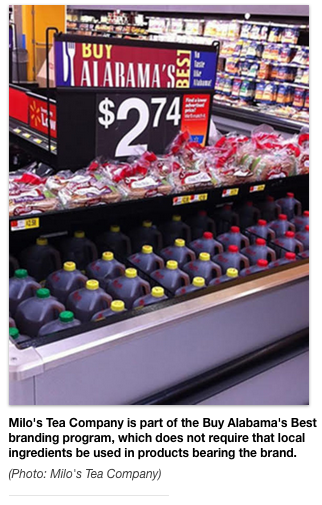 The company’s signature sweet tea has three key ingredients: Water, pure cane sugar and tea. It goes through seven tons of tea leaves a day, which are recycled and turned over to the city of Bessemer for composting.
The company’s signature sweet tea has three key ingredients: Water, pure cane sugar and tea. It goes through seven tons of tea leaves a day, which are recycled and turned over to the city of Bessemer for composting.
But Milo’s doesn’t get its tea leaves from Alabama farmers.
The leaves come from South America and India, according to company brand manager Alison Pierce.
That’s not an issue for Buy Alabama’s Best, the state branding program, which promotes Milo’s on its Web page and provides the company a logo to use in store displays.
Local ingredients are not a requirement to be a member of Alabama’s program. Because Milo’s makes its tea in Alabama, it qualifies for membership.
“In recent years, there has been a national trend of consumer interest in locally-made products,” Pierce said in an email. “(Buy Alabama’s Best) has also been instrumental in communicating to consumers in Alabama, that when they buy a Milo’s item they are supporting a family-owned company and helping create jobs in their home state.”
Alabama is not unique. Each state imposes its own standards and minimums on ingredients, from none to 100 percent.
“There is a huge diversity across states about what is local,” said Gail Feenstra, deputy director of the Sustainable Agriculture Research and Education Program at the University of California Division of Agriculture and Natural Resources.
Feenstra said there is more transparency on fresh produce because it’s easier for consumers to identify where it came from and recognize regional products on store shelves.
But shoppers need to do their research, she said.
Remember those coffee beans shipped to Utah roasting companies?
Park City Coffee Roaster is one of several coffee companies promoted through the Utah’s Own branding program.
Founded in 1997, the small-batch roaster is located in the upscale resort community that hosted events during the 2002 Winter Olympics.
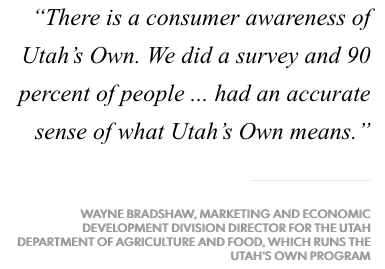 Park City gets its beans primarily from South America and Africa. The company’s website emphasizes that it does all of its roasting locally.
Park City gets its beans primarily from South America and Africa. The company’s website emphasizes that it does all of its roasting locally.
That’s enough to qualify for membership in Utah’s Own food-branding program, said Bradshaw at the Department of Agriculture.
Bradshaw said Utah’s Own’s mission is to educate food lovers about the economic impact of supporting local small food producers and showcasing producers.
“For Utah’s Own, it’s anything locally grown or produced,” he said. “Our boundaries for local are the state of Utah.”
He said Utah recently revamped its program with a new website, more diverse budget, stricter application process and annual membership fee. The program’s goal is to connect consumers with local producers.
“There is a consumer awareness of Utah’s Own,” Bradshaw said. “We did a survey and 90 percent of people … had an accurate sense of what Utah’s Own means.”
He acknowledged Utah’s Own doesn’t act as a regulatory agency and doesn’t monitor companies once they are approved.
“We don’t have the staff to go out and police everyone,” he said. “We only respond to instances where somebody has reported misuse of the label.”
Consumers opting to reach for peanut butter on grocery store shelves in Oklahoma are often willing to pay more for jars branded as fresh and local.
Drought and other rising farm prices have decimated Oklahoma’s once-burgeoning peanut crop.
The state once boasted a half-million acres of peanut farms and has been reduced to about 16,000, according to agriculture reports.
Peanut butter manufacturers who once grew their own peanuts are buying them from companies in other states, mostly in the Southeast.
Out-of-state peanuts doesn’t prevent companies from putting the Made in Oklahoma label on their products. Or charging more for the products as a local specialty.
 “You can bring in peanuts from out of state, and as long as you’re processing them into peanut butter in Oklahoma, it can be labeled as Made in Oklahoma,” said Jamie Cummings, market development coordinator for the state department of agriculture.
“You can bring in peanuts from out of state, and as long as you’re processing them into peanut butter in Oklahoma, it can be labeled as Made in Oklahoma,” said Jamie Cummings, market development coordinator for the state department of agriculture.
Snider Farms Peanut Barn says on its website, “We only use fresh, locally grown peanuts.” But owner Stephanie Snider said the family stopped growing peanuts a few years ago and now gets them from a Virginia company.
The peanuts come mostly from Georgia and Virginia. They are shipped to a distributor just a few miles across the state line in the Texas panhandle, Snider said.
The Peanut Barn buys raw shelled peanuts to cook and flavor or grind into paste for its handcrafted and popular Natural Peanut Butter.
“We manufacture everything in Oklahoma,” she said. “Everything we do to (peanuts), we do in Oklahoma.”
Snider said they sell the peanut butter at farmers markets, in small batches to gift stores and wholesale to retailers throughout the state.
She said the Peanut Barn sells 16 oz. jars directly for about $5. “Most of our business is wholesale and they will sell it for $6 or $7. More than we do.”
She said the Made in Oklahoma brand definitely boosts sales. She said local customers respond to the local label and seek out products made in the state, even if the price is higher.
“A lot of the larger stores we sell to like the Made in Oklahoma label,” she said. “That’s what they are pushing.”
Shoppers pay a premium
Local peanut butter isn’t the only product for which consumers will pay extra.
Ohio sums it up starkly on its Ohio Proud website. It said a survey found people “would be willing to pay up to 50 cents more for items made in Ohio.” Likewise, South Carolina found people would pay a 27.5 percent price premium for state-grown produce.
Is that what Ohio and South Carolina are delivering? Not always.
Both states put their brands on products only partially produced there.
To become an Ohio Proud member, a food maker’s product must be made up of at least 50 percent of ingredients “raised, grown or processed in Ohio.” That means half of the ingredients can come from another state or country.
South Carolina has no minimum on ingredients. The Certified South Carolina Product program includes agricultural and food products manufactured or processed in the state that “may or may not” include ingredients grown exclusively in South Carolina.
Produce must be grown in the state to be qualify as Certified South Carolina Grown.
Shane Burgman, 30, said he knows locally produced food is pricier. He looks to purchase berries, eggs and other items produced in his home county around Melbourne, Florida, but said a state logo isn’t important.
“You pay a premium,” he said. “Sometimes it’s worth it, sometimes it’s not.”
Researchers at the University of Minnesota Extension, in a 2014 study, said, “there is no professional or academic consensus on the term ‘local food.’ ” Some define it by the distance between the farm and the market. Others politically, by state boundaries. Still others define local ethically — by the way food is produced, distributed and consumed, researchers said.
There is, however, consensus on the bottom line. Multiple state branding programs point to a U.S. Department of Agriculture study on the explosion of local food sales.
It found sales increased to $1.2 billion in 2007 from $511 million in 1997.
According to a study by food industry research firm Packaged Facts, local food sales are projected to jump to $20 billion in 2019.
State programs maintain that buying local helps to create jobs, build sustainable communities and protect agriculture resources.
But slick marketing efforts to capture revenue risk alienating consumers, according to researchers.
“The idea of relatively homogenized programs seems counterproductive to the motives of why people turn to local food,” said Matthew Mars, assistant professor of agricultural leadership and motivation at the University of Arizona.
“It creates an inherent conflict,” Mars said, adding the lack of uniform regulations and guidelines undermine consumer confidence. “From that you could say they are deceived.”
Virginia Chip Firm Trucks In Potatoes
It takes a lot of potatoes to fill Route 11 chip bags. The Virginia company sources its key ingredient from potato farms up and down the eastern seaboard.
The company, founded in 1992, emphasizes on its website a desire to get potatoes from Virginia farmers when it can. But the growing season only lasts two months, from August to September.
The rest of the time, potatoes are brought in from Maine to Florida.
That doesn’t affect Route 11 Potato Chips’ standing in Virginia’s Finest, the state’s specialty food and beverage program operated alongside Virginia Grown.
That’s because the program doesn’t enforce a minimum on local ingredients. The primary membership requirement is whether a company does its manufacturing in the state. However, products using the logo must be reviewed and endorsed by a committee comprised of food professionals.
Route 11 touts transparency when it comes to its potatoes and makes a big deal of its Mount Jackson plant, which opened in 2008, as an eco-friendly operation.
“In this world of uncertainty that we live in, we believe comfort food should be just that,” the company’s website states. “Know where your food comes from!”
At least 20 states define food-makers as local as long as they are headquartered in the state.
Few Limits On ‘Go Texan’ Brands
In Texas, the only requirement to be in the state program is the payment of a fee. The Go Texan program includes pest-control firms and liquor stores.
Go Texan has virtually no accountability or enforcement. Records show no applications have been denied, and no businesses have been removed from the program.
Go Texan, with more than 1,700 members, allows almost any business in the state to become a member — and for good reason. Money is attached to every application and renewal that comes in.
That means in addition to produce and value-added products, you’ll also find restaurants and “associates” in the program. Associates include everything from chambers of commerce and festival organizations to pest-control companies and liquor stores.
Annual membership in the Go Texan program isn’t cheap.
Membership levels range from $100 to $5,000 per year and come with benefits such as prominent placement of the company’s logo on the Go Texan homepage.
Nineteen states have rules similar to Texas when it comes to non-food-related products. Think made, not grown.
There’s no such thing as logo police. Most states have rules for their programs; they just have no method or means to enforce them.
“We pretty much trust people at their word,” said Pam Coston, a spokeswoman for Fresh From Florida managed by the state department of agriculture and consumer services. “We’re not a regulatory agency.”
Florida is not alone. Program officials in at least 30 states described their programs as non-regulatory. They have no mechanisms for site inspections, reviews or compliance checks.
“We’re not going out there checking for people misusing the logo. We don’t have the staff resources for that,” said Michelle Grinnell, director of public relations for the Michigan Economic Development Council, which oversees Pure Michigan.
Grinnell said they are alerted to brand misuse by outside complaints. Or violators are caught during the application renewal process.
“If they’re using it in a way outside of our brand guidelines, we make sure it’s formal or we work with them to find other solutions that we could help provide them,” she said. “If we see it, we definitely want to take an action.”
Of the states that do have enforcement mechanisms in place, only five report removing members since 2014. That means 89 percent of programs have taken no enforcement action in the past three years.
Lee Weeks, operations manager of the 3,500-acre certified organic farm in central Louisiana, was among the first to apply for the Louisiana Grown. Real. Fresh. program in January 2013.
Weeks praised the program and said his company has complied with the state’s rules.
But officials from the Louisiana Grown program have not checked in since Weeks was accepted into the program more than four years ago, he said.
No farmer or producer has been inspected or removed from the Louisiana program, and only two were denied participation, records show. One wasn’t yet growing crops. The other was a beef producer that didn’t qualify for the specialty crop marketing program.
Like most state programs, Louisiana Grown does not review participants unless someone files a complaint, said Veronica Mosgrove, spokeswoman for the Department of Agriculture and Forestry.
Tough Screening No Guarantee
Tough requirements for program membership are no guarantee products will come from local farms or made exclusively with ingredients from a particular state.
Tennessee has a screening process. Pick Tennessee denied at least 12 applications in 2017. In 2014 the state conducted a full program audit and removed or denied 51 applicants. Some had moved out of state or gone out of business.
But the Pick Tennessee state brand can go on any product manufactured in the state that “includes an ingredient from a Tennessee farm when available.” And the program doesn’t consider itself a regulatory agency.
Instead, its budget goes to marketing. Since 2012, the Pick Tennessee marketing budget has ranged from $47,000 to $112,000, with average marketing spending of about $75,000.
Kentucky Proud has booted at least four companies from its program, which is “limited to those who produce or directly serve in a marketing capacity of Kentucky-grown agricultural products.”
Membership is free to companies that grow, raise, produce, process, or manufacture in Kentucky. But the state doesn’t mandate what percentage of ingredients in manufactured items must be locally sourced.
The program promotes “foods, nursery items, crafts, agri-tourism sites, farmers’ markets, state parks, and many other products and destinations with roots in Kentucky soil.”
California: Long On Rules, Short On Oversight
California is the largest U.S.producer of fruits and vegetables. Back in the 1970s, lawmakers there saw the value in branding and launched California Grown.
The linchpin of the program is a simple stamp that program members are allowed to put on their products. Some 500 farmers and markets are shipped 100 million stamps each year. They appear on everything from oranges to eggplants in markets and grocery stores across the state.
California Grown has tougher requirements than most state programs. Produce must be grown in the state, and 85 percent of any product must come from the state to qualify for the brand. California, like other states, puts a premium on marketing.
A majority of California Grown’s dollars have gone into producing videos and promotion of farm products.
“We leverage people’s interest in food, which is at its highest height,” said Nick Matteis, executive director of California Grown.
None of California Grown’s $1.7 million annual budget is directed toward enforcement or the proper use of its logo.
The program would require a “pretty significant” enforcement budget to patrol 400 specialty crops and about 15,000 agricultural producers in the program, Matteis said.
The program has not had enforcement actions in the past five years.
Farm and food researchers say they don’t consider state brands to be any guarantee of local products. They say states, particularly California, are too big and diverse to have any real meaning for consumers.
Fake, the University of California small-farms adviser, said consumers instead rely on regional and “hyper-hyper” local brands, that promote specific farms and products can be identified from county to county.
‘Jersey Fresh,’ 3 Other Programs Focus On Produce
Four states limit programs to fresh produce and other agricultural products that are really fresh from the farm.
New Jersey and New York programs offer stark contrast to the rest of the country with tough regulations, inspections and certifications.
Jersey Fresh requires farms undergo annual inspections to make sure the food is grown in-state and meets or exceeds USDA Grade 1 standards.
The program was designed to help farmers and inform consumers about the availability and variety of fruits and vegetables grown in New Jersey, officials said. They say Jersey Fresh has become the benchmark for other states to initiate their own state-grown agricultural marketing programs.
Members of the New York State Grown and Certified program must sign a trademark licensing agreement, have a food safety certification and be certified as an Agricultural Environmental Management program through the state’s Soil and Water Conservation Districts.
“The marketplace is saying, ‘Well, local is great. We want to know more. We want to know about transparency and food safety,’ ” said Richard Ball, the New York state commissioner of Agriculture and Markets.
The state has set aside $5 million to help New York farmers meet those standards.
“Products bearing the seal will let consumers know it was grown/produced in (New York),” the program’s website states, “and that the producer or processor has been audited for safe food handling and has taken steps to ensure environmental stewardship.”
Fake said even states with robust standards aren’t able to ensure quality over broad geographical areas.
She said she is concerned state programs are going to fatigue consumers who recognize the brand as a marketing tool, not as an actual aid in helping them find local food. She fears the marketing could come at a cost for truly local products and the local-food concept.
“Marketing does work when consumers don’t have a lot of time and can’t be bothered to do their homework,” she said. “You’ll get consumers. But you’ll get pissed-off consumers after a while.”
Includes reporting by USA TODAY Network reporters Elizabeth Alfs, Jennifer Biggs, Suzy Leonard, Anthony Machcinski, Tracy Schuhmacher, Joseph Spector and Megan Wyatt.
Research by Arizona Republic reporters Robert Anglen, Robert Gundran, Matthew Lively, Karisma Sandoval and Becca Smouse.
